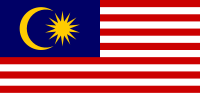
Photo from wikipedia
Abstract Colonisation of artificial structures by primary producers is an important determinant for eco-engineering projects. In this context, interactions between the colonisation by microphytobenthic biofilm and macroalgae were explored on… Click to show full abstract
Abstract Colonisation of artificial structures by primary producers is an important determinant for eco-engineering projects. In this context, interactions between the colonisation by microphytobenthic biofilm and macroalgae were explored on 48 samples of marine infrastructures (MI) immersed for one year in the English Channel. Marine infrastructures samples with smooth and rough surface were compared to evaluate the influence of surface micro-scale rugosity. Microphytobenthos biomass (MPB), macroalgal diversity and photosynthetic parameters of both were assessed during colonisation. No significant differences were found as a function of the surface rugosity of MI samples, which was unexpected, but can be explained by biogenic rugosity provided by barnacles. Marine infrastructures were largely colonised by a red encrusting alga, Phymatolithon purpureum, which showed poor photosynthetic capacity compared to the microphytobenthos present next to it. Colonisation by monospecific encrusting algae tended to reduce the primary productivity of hard substrate.
Journal Title: Biofouling
Year Published: 2022
Link to full text (if available)
Share on Social Media: Sign Up to like & get
recommendations!